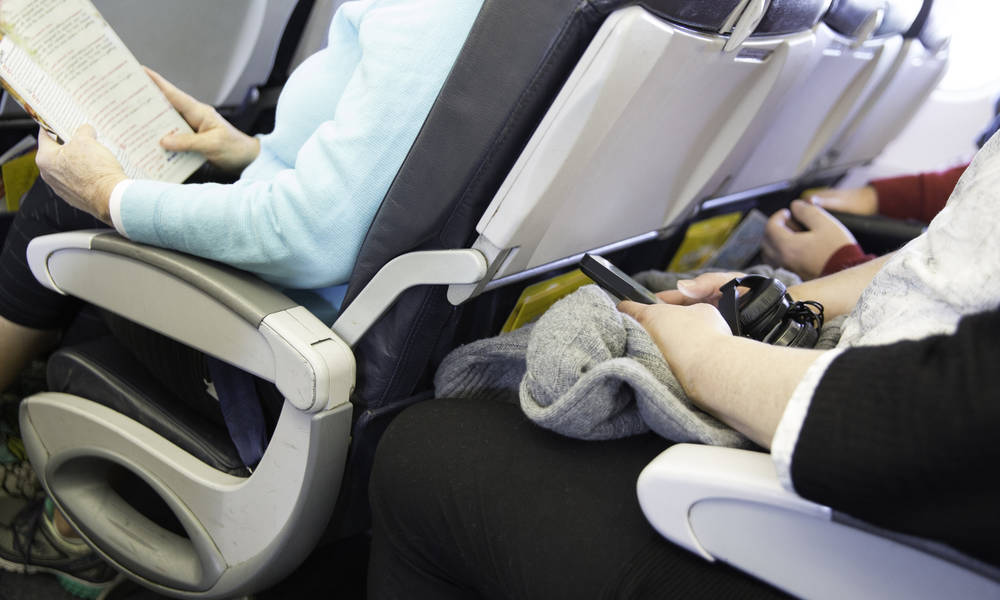
Will We Soon Get Relief From Cramped Airline Seats?
The recent FAA reauthorization bill requires the agency to set a minimum size for airline seats. But some are skeptical as to whether the forthcoming rulemaking will do anything useful for passengers.
Have you felt cramped in an airline seat recently? (This writer meekly raises hand.) There’s some good news and some bad news to report about that situation.
The good news is that Congress has required the Federal Aviation Administration to act on the issue. The most recent FAA reauthorization bill, signed into law in October, requires the agency to set seat width and length standards “that are necessary for the safety and health of passengers” within a year.
The move comes after a years-long slog that has seen the space between rows shrink below 30 inches (particularly on discount airlines), a decrease of nearly half a foot. Also shrinking is the average seat width, which has fallen below 17 inches on many airlines, a drop of more than 3 inches from a few decades ago.
The smaller dimensions have allowed airlines to maximize use of space on aircraft but have made it difficult for many passengers to sit comfortably—and consumer advocates argue it’s increasingly a safety issue.
The FAA previously declined to regulate seat size. Since the reauthorization bill passed, little information about the agency’s rulemaking plans has surfaced, and Senate Minority Leader Chuck Schumer (D-NY) recently called on the FAA to speed up the process.
“The #1 travel complaint I get from airline customers in the capital region, including Albany, is shrinking seats, and—like the seats themselves—the FAA’s timeline to tackle this issue is getting smaller and smaller with each passing day,” Schumer said in a news release just before Thanksgiving.
What will change?
And now for the bad news: Experts say the new law will likely prevent seats from getting much smaller, but it might not do anything to cause them to get larger. “It’s a mistake to imagine this legislation will have a big impact on airlines or consumers,” said Samuel Engel, the head of aviation business at the consulting firm ICF, in comments to Reuters.
Speaking to The Washington Post, Airlines for America spokeswoman Alison McAfee disputed the suggestion that smaller amenities on airlines (including restrooms) are affecting safety.
“In 2017 alone, airlines invested an estimated $19.9 billion to enhance their product and customer experience, including newer larger aircraft, larger overhead bins, and various amenities that customers want when they travel,” she said, adding: “The idea that airlines would intentionally downgrade the flying experience or undermine safety is a flawed premise.”
To date, the FAA has not treated smaller seats as a safety issue, which leads consumer advocates to question how the agency will respond to the mandate to regulate seat size.
“Unless the FAA changes its current position that existing shrunken seats are safe, that there are no significant adverse health effects, that it has no jurisdiction to regulate seats due to health effects anyway, and that any matter of comfort is none of its business, there will likely be no change,” Paul Hudson, president of FlyersRights.org, which is advocating for a minimum seat size, told USA Today. “The FAA could even set seat size standards so low that it encourages further shrinkage.”
(Jodi Jacobson/iStock/Getty Images Plus)






Comments